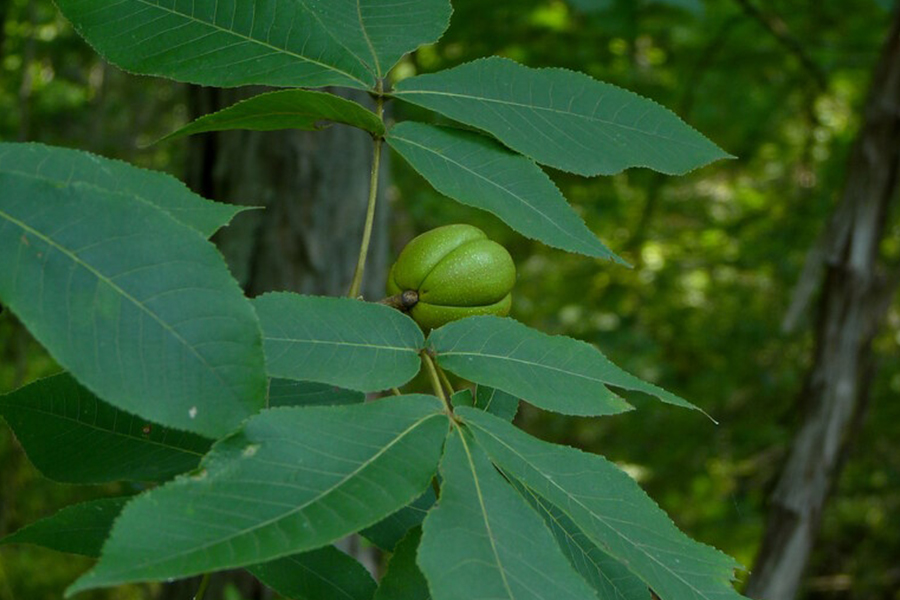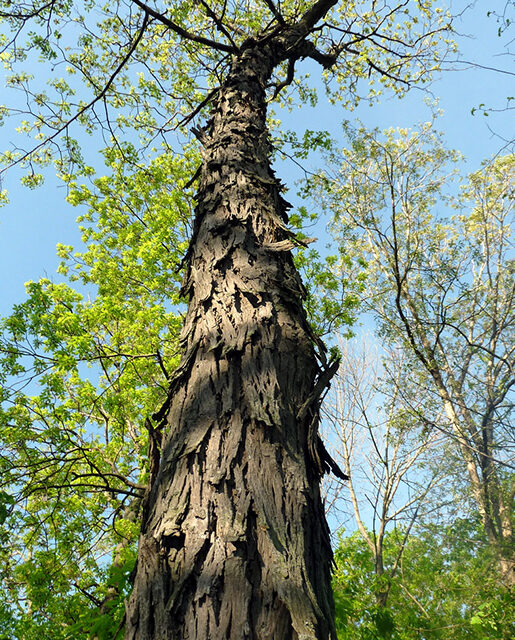Carya ovata
Shagbark hickory is a deciduous tree known for its distinct shaggy bark which provides shelter for wildlife such as birds and bats.
Location
Today, Shagbark hickory can be found along Appleton Road, particularly as you get further away from Lovell Street. They should stand out due to their shaggy bark and can be spotted opposite the sugar maple trees. If you visit the arboretum at the right time, you might even spot the bats which have been recorded nesting in their bark.


History at Hadwen
The shagbark hickory was first recorded in the arboretum during a 1971 project, “Special Problems in Botony,” undertaken by Dean Vernon Ahmadjian to determine the present status of the Hadwen Arboretum. Shagbark hickories were documented again in 1978 and 2020.
Keep Learning
Detailed Species Information
The shagbark hickory is a deciduous tree in the family Juglandaceae. It is distributed throughout the eastern United States. The shagbark hickory is the tallest hickory in New England, typically growing to heights of 90 feet (27 meters). The common name references the distinctive shaggy bark which peels away from the trunk in long, vertical strips. The leaves are compound, with 5–7 leaflets, and can be up to 12 inches (30 cm) long, while the nuts are round with a hard, four-sectioned husk.
Shagbark hickories can be found growing near streams and on hillsides, preferring rich soils and having intermediate shade tolerance. Ecologically, the shagbark hickory plays a crucial role in its habitat, providing food and shelter for a wide range of wildlife, including birds, bats, bears, deer, and small mammals. The nuts are an essential food source for these animals, while the tree’s dense shaggy bark and foliage provide shelter.
The shagbark hickory’s wood is highly valued for its strength and durability making it an excellent choice for furniture, flooring, and tool handles. In addition, the nuts are edible and can be used in a variety of dishes, including baked goods, although they are not commercially viable. In landscaping, the shagbark hickory is sometimes used as an ornamental tree due to its distinct bark.
